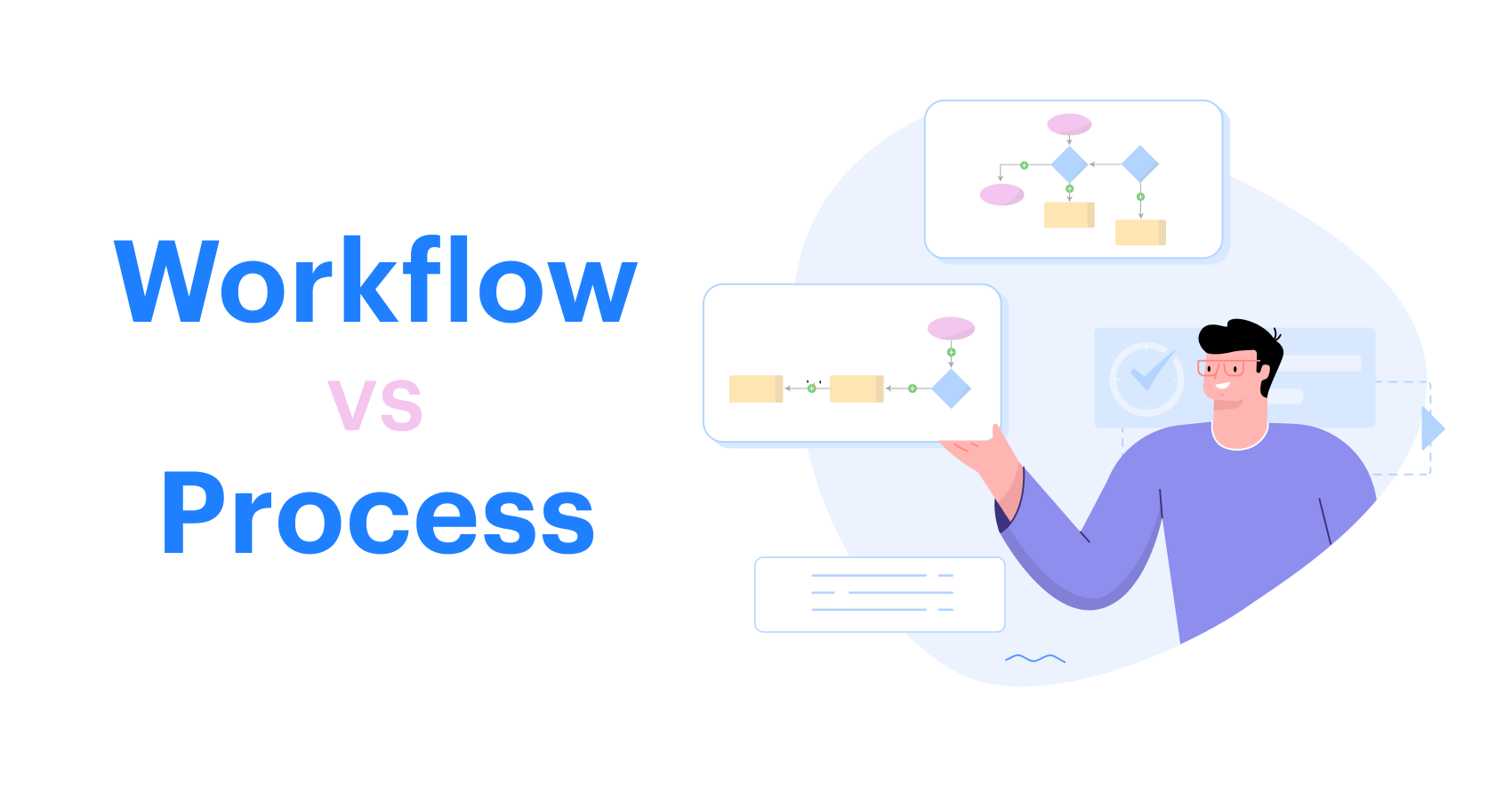What is a Workflow Process?
A workflow process is a set of steps or tasks that are followed to complete a specific process or job within an organization. It defines the sequence of activities, who is responsible for each task, and what tools or resources are required to complete it. A workflow process aims to improve efficiency, ensure consistency, and streamline communication.
What is Business Workflow?
Business workflows refer to repetitive processes consisting of several tasks that should be completed in a specific order. It helps organizations get a top-level view of what's happening, eliminates redundancies, increases accountability and a high degree of business efficiency.
When you start researching workflows vs processes, you might start wondering if there is any difference at all. It is confusing for many people, but it doesn’t end with just the definition of the two words. Understanding the conceptual differences between workflows vs processes can help you organize your business better.
Laying tracks
Let’s talk about trains for a bit. It takes a lot of thinking and design to get materials from one station to another. One essential element in a train system is the tracks.
The tracks are a predetermined direction for the engine and cars to follow. The tracks might lead to different stations before getting to the final destination. They also will have some built-in flexibility to bypass certain stations or take an alternate path when needed.
In the world of business processes, the tracks are the workflow. They’re the path the train must follow. A workflow can be very long and include multiple stops. Or, it might twist and turn and go to different stations depending on what the predetermined path is.
When you create a workflow for your business process, you are laying the tracks to show it where to go.
Workflow in Organizations
Workflow acts as an outline for employees to follow every time they start a task. Take expense reimbursements for example- where the employees submit the expenses they have incurred for reimbursement. In a typical expense approval process:
Step 1: The employee fills out a form, entering the details of expenses incurred.
Step 2: The form is submitted along with bills for proof.
Step 3: The form is sent to the finance team who verifies the request.
Step 4: After verification, the request can either be approved or rejected.
Step 5 (a): If the request is approved, the finance team reimburses the money to the employee.
Step 5 (b): if the request is rejected, the form is sent back to the employee with the reason stated. This marks the completion of this workflow.
Other common examples of a workflow are: Product return authorisations, purchase approval requests, employee onboarding, the addition of new clients to a database, etc.
Overview of a business process
A business process is a collection of interlinked steps that are performed by a group of users in order to accomplish a specific organizational goal. A participant is held accountable for the completion of each step in a business process. It forms the foundation of some well-versed concepts like business process automation, business process reengineering, and more.
Process in Organizations
Processes are used to solve large-scale issues that can potentially affect the end goals of an organization. Processes help in identifying the tasks that are essential and the ones that may be unnecessary.
Processes enable teams to carry out the crucial operational functionalities of Marketing, high-level administration, logistics and procurement, information technology, auditing, etc.
Workflows vs Processes - Key Differences

Here are the major differences between Processes and Workflow.
| Workflows | Processes |
| A sequence of tasks | Is process-oriented |
| Focused on tasks |
Focused on goals |
| Tactical | Strategic |
| Focuses on moving a task to completion | Focuses on achieving a key business goal |
| Are created by listing out steps and tasks | Must consider a much broader set of actors, data, reports, and business impact |
Building your own system
If you are thinking about workflow vs process, think in terms of trains. Workflows are an essential part of getting things done, but they aren’t the only piece you need to think about. A great business process management (BPM) system also includes highly functional forms, notifications, communication and a powerful engine to pull everything along.
If you limit your thinking to just workflows, you might miss out on all the other essentials that are part of a process.
Try Kissflow Workflow and see what it is like to work with the system that was created for building entire processes rather than just workflows.
Kissflow Workflow transforms the way you get work done
“Kissflow's advanced automation of all processes is easy to set up. I cannot imagine how I will manage workflows without this software”
- Frederic J
Thanks for submitting.
Our solution experts will connect with you to get started.